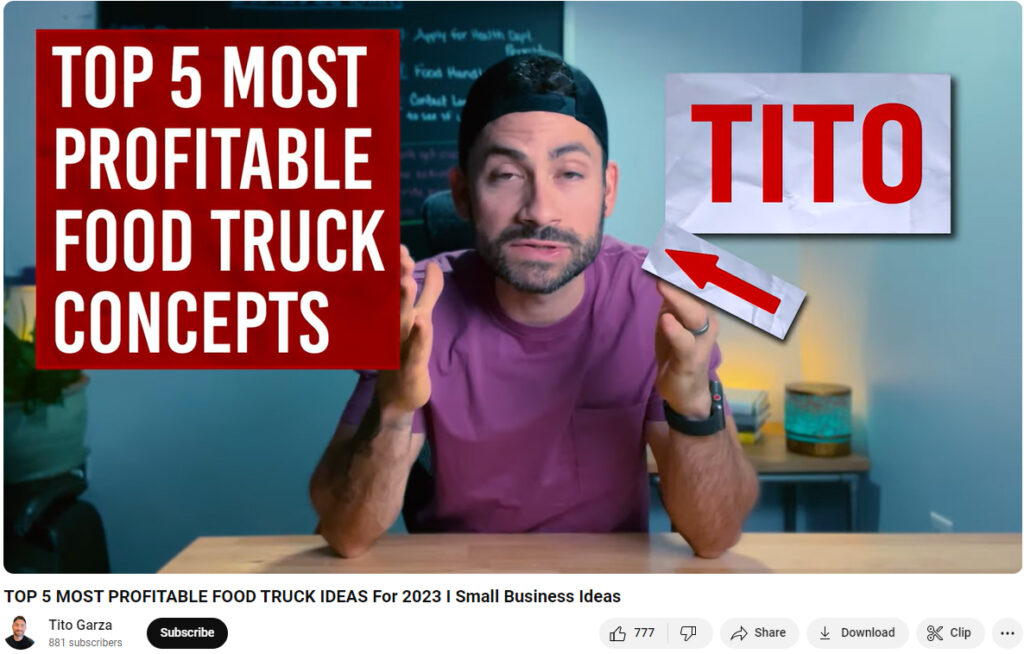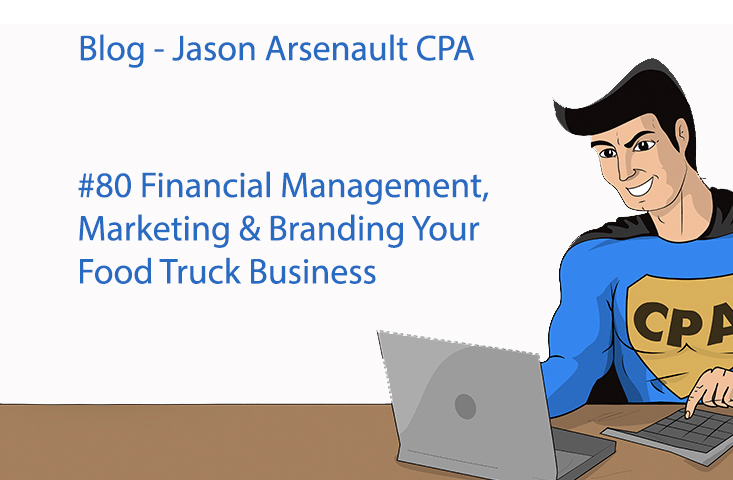We hope you found our previous blog posts on starting a food truck business helpful. In this post, we delve into a section that might not be as exciting as crafting your menu or designing your truck, but it’s crucial for your success—financial management. This piece is essential for ensuring you not only cover your costs but also make a profit.
In our previous posts, we covered the various steps needed to get started. Now, we’ll put a cost to those pieces, explore how you’re going to pay for them, and discuss the ongoing expenses of running your business. Remember, the startup is just one aspect of cost. Running a business always involves creating cash flow from operations to cover ongoing costs. How are you going to keep track of that? Let’s dive in.
Financial Management
Startup Costs:
Calculate Initial Expenses:
- Vehicle: Costs for purchasing or leasing your food truck or trailer. This includes customization to fit your specific needs.
- Equipment: Essential kitchen equipment, POS systems, utensils, containers, and initial stock of ingredients. Invest in durable, high-quality equipment to withstand the demands of a mobile kitchen.
- Permits and Licenses: Costs for obtaining necessary permits and licenses to operate legally, including health permits and business licenses.
- Marketing: Initial costs for branding, website development, and promotional materials to establish your presence and attract customers.
Secure Funding:
- Savings: Use personal savings to cover initial costs if possible. This can minimize debt but may limit your budget.
- Loans: Apply for small business loans or equipment financing options. Ensure you understand the terms and repayment schedules.
- Investors: Seek investments from family, friends, or angel investors who believe in your business idea and are willing to provide the necessary capital.
Ongoing Expenses:
Track Expenses:
- Food Supplies: Regular purchases of fresh ingredients from reputable suppliers.
- Fuel: Costs associated with moving the food truck to various locations and events.
- Maintenance: Regular servicing and repairs for the vehicle and kitchen equipment to ensure smooth operations.
- Payroll: Wages for employees, if applicable. This includes salaries, wages, and any benefits you offer.
- Insurance: Ongoing premiums for commercial vehicle insurance, liability coverage, and other necessary policies.
Revenue and Profitability:
Monitor Daily Sales:
- Sales Tracking: Keep detailed records of daily sales to identify trends, peak times, and popular menu items. This data is crucial for making informed business decisions.
- Profit Margins: Calculate profit margins by comparing sales revenue against expenses. This helps you understand your profitability and make adjustments as needed.
Implement Accounting Software or Hire an Accountant:
- Software: Use accounting software to manage finances, track expenses, and generate financial reports. Tools like QuickBooks or Xero can simplify financial management.
- Professional Help: Hire an accountant to ensure accurate financial management and compliance with tax regulations. An accountant can also provide valuable advice on financial planning and strategy.
By carefully managing your startup costs and ongoing expenses, you can ensure your food truck business is financially viable. Tracking sales and profitability will help you make informed decisions and adjustments to keep your business on the path to success.

Marketing and Branding
Building a strong brand and effectively marketing your food truck are crucial for attracting and retaining customers. Here’s a detailed guide to help you develop a memorable brand and implement effective marketing strategies.
Brand Development
Create a Memorable Brand:
Name:
- Catchy and Memorable: Choose a name that is catchy, memorable, and reflects your food truck’s theme. It should be easy to pronounce and recall.
- Relevance: Ensure the name conveys the essence of your business, whether it’s the type of food you serve, your culinary style, or the vibe you want to create.
Logo:
- Professional Design: Design a professional logo that stands out and represents your brand. A good logo is simple, versatile, and instantly recognizable.
- Visual Appeal: Use colors and design elements that align with your brand’s theme and appeal to your target audience.
Design:
- Cohesive Look: Develop a cohesive design for your food truck, including colors, graphics, and signage. The design should be eye-catching and reflect your brand’s personality.
- Consistency: Ensure all branding materials, including menus, business cards, and promotional items, have a consistent look and feel.
Online Presence
Build a Website:
Information:
- Essentials: Include essential information such as your menu, operating hours, and contact details. Make sure this information is easy to find and navigate.
- User-Friendly: Ensure your website is mobile-friendly and easy to navigate.
Updates:
- Regular Updates: Regularly update the website with new locations, events, and promotions. Keeping your content fresh helps maintain customer interest and engagement.
- Blog or News Section: Consider adding a blog or news section to share stories, recipes, and behind-the-scenes insights.
Set Up Social Media Accounts:
Platforms:
- Popular Platforms: Create profiles on popular social media platforms like Instagram, Facebook, and Twitter. These platforms are ideal for reaching a broad audience and engaging with your customers.
- Professional Profiles: Ensure your profiles are complete with your logo, business information, and links to your website.
Engagement:
- Customer Interaction: Use these platforms to engage with customers, share photos of your food, and provide updates on your location and special offers.
- Content Strategy: Post regularly and use a mix of content types, such as photos, videos, stories, and polls, to keep your audience engaged.
Promotion
Develop a Marketing Plan:
Promotions:
- Special Offers: Create special promotions and discounts to attract new customers and retain existing ones. For example, offer a discount for first-time customers or a special deal on certain days of the week.
- Seasonal Promotions: Consider seasonal promotions that align with holidays, local events, or seasonal menu items.
Loyalty Programs:
- Customer Rewards: Implement loyalty programs to reward repeat customers. This could be a punch card system, a points-based system, or a digital app.
- Incentives: Offer incentives such as free items, discounts, or exclusive deals for loyal customers.
Partnerships:
- Local Collaborations: Partner with local businesses, events, and influencers to increase visibility. Collaborations can include cross-promotions, joint events, or special menu items featuring local products.
- Event Participation: Participate in community events, farmer’s markets, and local fairs to increase your exposure and customer base.
Attend Local Events:
Networking:
- Industry Connections: Attend food truck festivals, community events, and local fairs to network with other food truck owners and industry professionals. Building these connections can lead to valuable collaborations and opportunities.
- Customer Engagement: Use events as an opportunity to engage with your customers face-to-face and gather feedback.
Visibility:
- Brand Showcase: Use events to showcase your food and brand. Set up eye-catching displays and offer samples to attract potential customers.
- Market Presence: Regularly attending events helps establish your presence in the local market and builds a loyal customer base.
By focusing on brand development, building a strong online presence, and implementing effective promotion strategies, you can create a successful marketing plan for your food truck business. These efforts will help you attract and retain customers, increase visibility, and build a strong brand identity.
Financial Management for Campus Tacos: Example of Startup Costs and Sales Projections
Let’s use the “Campus Tacos” food truck example to illustrate startup costs and sales projections. This will provide a clear picture of the financial requirements and expected cash flow needed to cover ongoing costs and achieve profitability.
Startup Costs
Vehicle:
- Food Truck Purchase: $70,000
- Customization and Equipment Installation: $15,000
Equipment:
- Kitchen Equipment (grills, fryers, refrigerators, etc.): $10,000
- POS System: $2,000
- Utensils and Containers: $1,000
- Initial Stock of Ingredients: $2,000
Permits and Licenses:
- Business License: $35
- Health Department Permits: $120
- Food Handler’s Permits (for staff): $10
Marketing:
- Branding (logo, truck design): $2,000
- Website Development: $1,500
- Initial Promotional Materials (flyers, social media ads): $1,000
Miscellaneous Costs:
- Insurance (first year premium): $1,500
- Fuel (initial fuel costs): $500
- Contingency Fund: $3,000
Total Startup Costs: $110,600
Ongoing Expenses (Monthly)
Track Expenses:
- Food Supplies: $4,000
- Fuel: $500
- Maintenance: $300
- Payroll (2 part-time employees): $3,000
- Insurance: $125
- Miscellaneous (cleaning supplies, utensils, etc.): $200
Total Monthly Ongoing Expenses: $8,125
Revenue and Profitability
Sales Projections:
- Average Sales per Day: $500 (based on serving approximately 100 customers with an average spend of $5)
- Operating Days per Month: 25
Monthly Sales Revenue: $500 x 25 = $12,500
Profit Margins:
- Monthly Revenue: $12,500
- Monthly Expenses: $8,125
- Monthly Profit: $12,500 – $8,125 = $4,375
Break-even Analysis
Initial Investment: $110,600
- Monthly Profit: $4,375
Time to Break-even: $110,600 / $4,375 ≈ 25 months
Summary
Startup Costs:
- Vehicle, equipment, permits, licenses, marketing, and miscellaneous: $110,600
Monthly Ongoing Expenses:
- Food supplies, fuel, maintenance, payroll, insurance, and miscellaneous: $8,125
Sales Projections:
- Average daily sales of $500, operating 25 days a month, resulting in monthly revenue of $12,500
Profitability:
- Monthly profit of $4,375, allowing the business to cover ongoing costs and contribute towards recouping the initial investment
By managing startup costs and projecting realistic sales figures, Campus Tacos can achieve profitability and cover ongoing expenses within approximately 25 months. Consistent sales tracking and financial management will be crucial in maintaining cash flow and ensuring the long-term success of the business.
At Jason Arsenault CPA, LLC, we are here to help you in your food truck business journey. Our expertise can provide you with the support you need to create a strong brand and develop effective marketing strategies.
Contact us for assistance with your business setup:
Jason Arsenault CPA, LLC
- Phone: 505.722.3399
- Email: jason@payrollbookstaxes.com
- Website: payrollbookstaxes.com
Stay tuned for our next blog post, where we will delve into Setting up Books, and a Customized Chart of Accounts for your food truck. We’ll provide insights on managing your finances, creating a strong brand identity, and developing effective marketing strategies. Let us help you make your food truck dream a reality!

